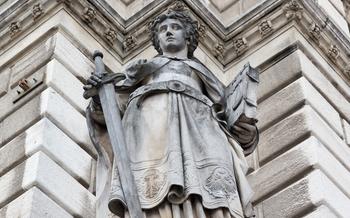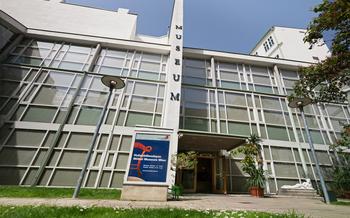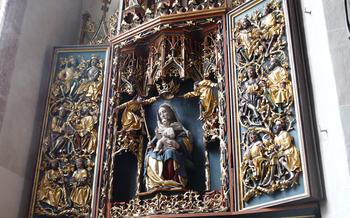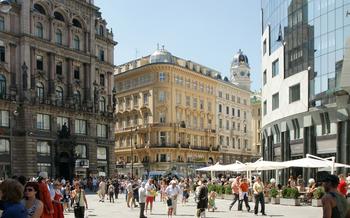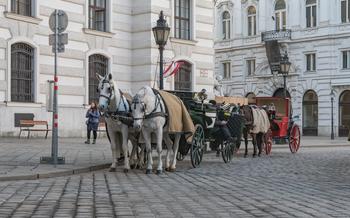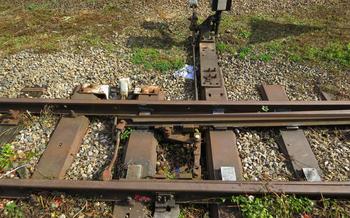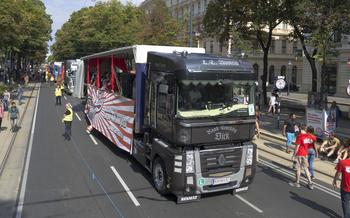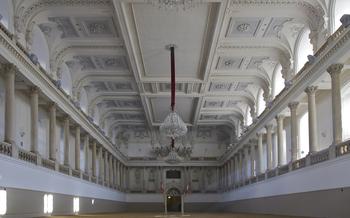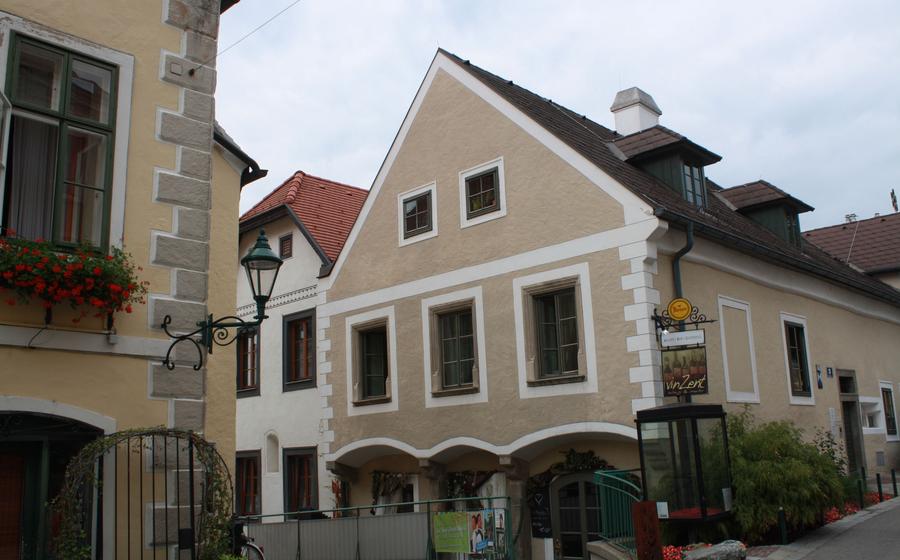
Spanish Riding School
- Historical Background
- Location and Getting There
- Performances and Shows
- Morning Exercises
- Lipizzaner Horses
- Riding Hall
- Stall Building
- Museum
- Dressage
- Behind-the-Scenes Tours
- Kids and Families
- Photography Tips
- Dress Code and Etiquette
- Insider Tip
Historical Background
The Spanish Riding School, a venerable institution with roots tracing back to the 16th century, stands as a testament to the enduring legacy of classical equestrian traditions. Its origins can be traced to Emperor Maximilian II, a Habsburg monarch with a profound affinity for horses, who in 1562 established a court stud in Kladrub, Bohemia, to breed and train horses for his personal use. The school's reputation grew, attracting the attention of noblemen and royalty across Europe, who sought to acquire these exceptional horses for their own stables. The Spanish Riding School gained its name from the prized Andalusian horses imported from Spain, which formed the foundation of the Lipizzaner breed.
The school's reputation for excellence in horsemanship and the preservation of classical equestrian traditions has endured for centuries. In 1735, the Imperial Spanish Riding School was formally established in Vienna, Austria, where it remains to this day. Over the years, the school has faced numerous challenges, including wars, fires, and economic hardships, but it has consistently maintained its high standards and dedication to the art of classical dressage. Today, the Spanish Riding School is recognized worldwide as one of the leading institutions for classical horsemanship, attracting visitors from around the globe who come to witness the grace, precision, and harmony of its performances.
Location and Getting There
The Spanish Riding School is conveniently located in the heart of Vienna, at Josefsplatz 6, just a short walk from the Hofburg Palace and the Spanish Riding School metro station.
Public transportation is the most convenient way to reach the school, with several bus and tram lines stopping nearby.
For those arriving by car, limited parking is available in the surrounding streets, but it is advisable to use public transportation to avoid the hassle of finding a parking space.
Performances and Shows
The Spanish Riding School showcases the talents of its horses and riders through a variety of performances and shows. The most renowned is the Morning Exercise, where visitors can witness the daily training routine of the horses and riders. This intimate setting allows visitors to observe the precision and grace of the horses as they perform intricate dressage movements.
For a more spectacular display, the Evening Gala Performance is a must-see. Held in the opulent Winter Riding School, this grand event features a series of breathtaking performances by the Lipizzaner horses, accompanied by classical music and elaborate costumes. The highlight of the show is the Quadrille, where eight perfectly synchronized horses perform a mesmerizing ballet of movements.
Ticket prices for the Morning Exercise range from 15 to 30 euros, while the Evening Gala Performance tickets start at 45 euros. Advanced booking is highly recommended, especially for the popular evening shows, which often sell out weeks in advance. Visitors can purchase tickets online through the Spanish Riding School's website or through authorized ticket agencies.
Morning Exercises
The Spanish Riding School offers visitors the unique opportunity to witness the daily routine of the horses and riders during the morning exercises. These exercises, which begin at 10 am every weekday, provide a fascinating glimpse into the training process of these magnificent animals.
During the morning exercises, the horses are put through a series of carefully choreographed movements designed to improve their strength, flexibility, and coordination. The riders, dressed in traditional uniforms, guide the horses with subtle cues and signals, demonstrating the remarkable bond and understanding between horse and rider.
Visitors can observe the morning exercises from a gallery overlooking the indoor riding arena. It is a truly mesmerizing sight to watch the Lipizzaner horses perform intricate maneuvers with grace and precision, showcasing the centuries-old tradition of classical horsemanship.
When attending the morning exercises, it is important to be respectful and maintain a quiet atmosphere. Visitors should also dress appropriately, avoiding shorts, tank tops, or other casual attire. Photography is allowed, but flash photography is not permitted.
Lipizzaner Horses
The Spanish Riding School is renowned for its majestic Lipizzaner horses, a breed known for its elegance, intelligence, and athleticism. These magnificent animals have a rich history and unique characteristics that set them apart from other breeds.
Lipizzaner horses originated in the 16th century when the Habsburg dynasty sought to create the perfect horse for classical dressage. By carefully selecting and breeding horses with desirable traits, they developed the Lipizzaner breed, named after the Lipizza stud farm in Slovenia, where they were initially bred.
Lipizzaner horses are known for their distinctive appearance, characterized by their gray coat, which brightens to a gleaming white as they mature. They have a compact and muscular build, with a refined head and arched neck. Their height typically ranges from 15 to 17 hands, making them ideal for dressage, where agility and grace are essential.
The Lipizzaner breed is not only visually striking but also possesses exceptional intelligence and a remarkable ability to learn and perform complex movements. Their temperament is calm and gentle, making them ideal partners for their riders in the demanding world of classical dressage.
Breeding and training Lipizzaner horses is a meticulous process that requires patience, skill, and dedication. Mares are bred only once every two years, and the resulting foals are carefully monitored and selected for their potential. The training begins at an early age, with young horses gradually introduced to the basics of dressage. As they mature, the training intensifies, and the horses learn increasingly complex movements, building strength, flexibility, and obedience.
The Spanish Riding School is committed to preserving and promoting the Lipizzaner breed. Through its breeding program and rigorous training methods, the school ensures that the legacy of these remarkable horses continues to thrive for generations to come.
Riding Hall
The Winter Riding School, also known as the Spanish Riding Hall, is a magnificent Baroque masterpiece that stands as a testament to the grandeur of the Spanish Riding School. Built in the 17th century, this iconic building is not just a performance space but a symbol of Vienna's rich equestrian heritage.
The Riding Hall's grand dimensions and intricate architectural details create an awe-inspiring setting for the school's performances. Its high vaulted ceiling, supported by elegant pillars and arches, provides a sense of spaciousness that complements the graceful movements of the Lipizzaner horses. The walls are adorned with intricate stucco work, depicting scenes from Greek mythology and equestrian motifs, adding to the hall's artistic charm.
Visitors to the school can take guided tours to explore the Riding Hall and learn about its history and significance. These tours provide insights into the daily life of the horses and riders and offer a glimpse into the behind-the-scenes workings of the school. Photography enthusiasts can capture stunning images of the hall's grandeur and the Lipizzaner horses in their majestic element.
Stall Building
The Stall Building is the home to the Lipizzaner horses, providing them with comfortable and well-maintained living quarters. Guided tours of the stalls offer visitors an up-close look at these magnificent animals and an insight into their daily routine. During these tours, you can witness the care and attention given to each horse, from grooming and feeding to veterinary checkups. You'll also learn about the history and significance of the Lipizzaner breed, and the important role they play in preserving classical equestrian traditions.
One of the highlights of the Stall Building is the opportunity to interact with the horses. You can gently stroke their velvety coats, feed them treats, and experience their gentle and friendly nature firsthand. The staff at the Spanish Riding School is knowledgeable and passionate about the horses, and they are always happy to answer any questions you may have. Whether you're a horse enthusiast or simply looking for a unique and memorable experience, a visit to the Stall Building is a must.
Museum
The Spanish Riding School Museum is a treasure trove of fascinating exhibits that delve into the rich history of the school and the Lipizzaner horses. Through interactive displays, multimedia presentations, and a captivating collection of artifacts, visitors can immerse themselves in the world of classical equestrianism.
Exhibits showcase the school's origins, tracing its evolution from its humble beginnings to its current status as a world-renowned institution. Visitors can learn about the unique characteristics of the Lipizzaner breed, their history, and the meticulous breeding program that has preserved their exceptional qualities for centuries. The museum also highlights the daily routine of the horses and riders, providing insights into their training, care, and the deep bond they share.
A visit to the museum is an enriching experience that complements the performances and offers a deeper understanding of the Spanish Riding School's legacy. Whether you're a history buff, an equestrian enthusiast, or simply curious about the world of classical horsemanship, the museum has something to captivate and inspire every visitor.
Dressage
Dressage is a highly refined art form in classical horsemanship that emphasizes the harmonious partnership between horse and rider. It is a demanding discipline that requires exceptional skill, precision, and athleticism from both horse and rider. At the Spanish Riding School, dressage is a core component of the training program and is showcased in stunning performances and demonstrations.
The term "dressage" originates from the French word "dresser," which means "to train" or "to educate." In the context of classical horsemanship, dressage involves training the horse to perform a series of intricate movements with grace, fluidity, and obedience. These movements are designed to develop the horse's strength, suppleness, and responsiveness, while also fostering a deep connection between horse and rider.
At the Spanish Riding School, dressage training begins at an early age, with young horses gradually introduced to the basic principles of obedience and control. As the horses mature, the training becomes more complex, incorporating advanced movements such as piaffe, passage, and pirouette. These movements require the horse to perform intricate steps, turns, and changes of direction with precision and elegance.
The riders who perform dressage at the Spanish Riding School are among the most skilled and experienced in the world. They have dedicated years to mastering the art of dressage and have a deep understanding of the horse's psychology and biomechanics. Their skill and expertise allow them to communicate effectively with their horses, guiding them through complex movements with seemingly effortless grace.
Dressage demonstrations at the Spanish Riding School are a breathtaking spectacle that showcases the extraordinary partnership between horse and rider. The horses perform intricate movements with fluidity, precision, and elegance, while the riders maintain a calm and collected demeanor. The performances are a testament to the centuries-old tradition of classical horsemanship and the dedication and skill of the riders and horses at the Spanish Riding School.
Behind-the-Scenes Tours
For an exclusive glimpse into the world of the Spanish Riding School, consider booking a behind-the-scenes tour. These tours offer a deeper understanding of the school's history, traditions, and daily operations.
Led by experienced guides, you'll be taken to restricted areas such as the tack room, where you can learn about the specialized equipment used by the riders. You'll also have the opportunity to meet the riders and grooms and gain insights into their work and dedication to the horses.
A highlight of the tour is the chance to witness the morning exercises up close. You'll see the horses being groomed, saddled, and put through their paces in the riding hall. This is a unique opportunity to observe the skill and precision of the riders as they work with their horses.
Behind-the-scenes tours are available on select days and times. Advance booking is essential to secure your spot. Prices vary depending on the tour option and group size.
Kids and Families
The Spanish Riding School offers several programs and activities specifically designed for children and families. Little ones can enjoy pony rides, where they can experience the thrill of riding a horse under the supervision of experienced instructors. There's also a petting zoo, where kids can interact with the friendly Lipizzaner horses and learn about their unique characteristics.
Family-friendly performances and events are regularly organized throughout the year. These shows feature captivating displays of horsemanship, acrobatics, and music, sure to entertain and amaze both children and adults. The school also hosts educational workshops and guided tours tailored to families, providing an immersive and interactive learning experience for all ages.
Photography Tips
Photography Tips
Capturing the beauty and grace of the Spanish Riding School and its Lipizzaner horses through photography is a rewarding experience. Here are some tips to help you make the most of your photographic journey:
-
Best Places to Take Photos: The Winter Riding School offers several vantage points for photography. Stand at the entrance of the hall to capture the grandeur of the space and the horses performing their intricate maneuvers. For close-up shots, position yourself along the sides of the arena.
-
Capture the Beauty of the Lipizzaner Horses: The Lipizzaner horses are renowned for their elegance and athleticism. Focus on capturing their expressive eyes, flowing manes, and powerful movements. Use a fast shutter speed to freeze the action and highlight the horses' grace and precision.
-
Etiquette and Guidelines: Photography is permitted during performances and morning exercises, but it's essential to be respectful and avoid disturbing the horses and riders. Turn off your flash and use a silent camera mode to minimize distractions. Always ask for permission before photographing the horses in the stalls or during training sessions.
Dress Code and Etiquette
Appropriate attire for visiting the school
To maintain the highest level of respect and decorum within the Spanish Riding School, visitors are expected to adhere to a specific dress code. Smart casual attire is generally recommended, ensuring that clothing is clean, pressed, and appropriate for a formal setting. Avoid wearing shorts, tank tops, or excessively revealing clothing. For men, a collared shirt or polo shirt paired with dress pants is suitable. Women can opt for a dress, skirt, or tailored pants with a blouse or sweater.
Verhaltensregeln fur die Besucher der Spanischen Hofreitschule
Beyond the dress code, visitors are also expected to observe proper etiquette while within the premises of the Spanish Riding School. This includes maintaining a respectful silence during performances and shows, refraining from using flash photography or making loud noises that may disturb the horses or riders. It is also essential to follow the instructions provided by the staff and guides and to avoid touching or interacting with the horses unless explicitly permitted.
Guidelines for interacting with the horses and staff
The horses and staff of the Spanish Riding School are highly trained professionals, and it is crucial to treat them with respect and courtesy. Refrain from attempting to feed or pet the horses without permission, and always maintain a safe distance to avoid startling or disturbing them. When interacting with the staff, be polite and understanding, recognizing that they are dedicated to providing the best care for the horses and ensuring a memorable experience for visitors.
Insider Tip
-
Best time to visit to avoid crowds: Aim to visit the Spanish Riding School on a weekday morning, particularly during the off-season (November to March). This will allow you to experience the performances and attractions without the throngs of tourists.
-
Secret spots for amazing views of the school: For a unique perspective of the school, head to the Stallburg Garden, located behind the Imperial Palace. From here, you can admire the stunning Baroque architecture of the Winter Riding School and capture some Insta-worthy shots.
-
Hidden gems in the surrounding area: After your visit to the Spanish Riding School, take some time to explore the surrounding area. Just a short walk away, you'll find the Belvedere Palace, home to an impressive art collection, including works by Gustav Klimt. The Botanical Garden of the University of Vienna is also nearby, offering a tranquil oasis amidst the city's hustle and bustle.

